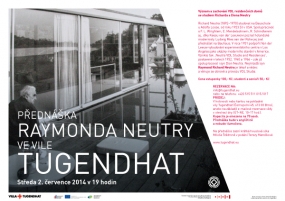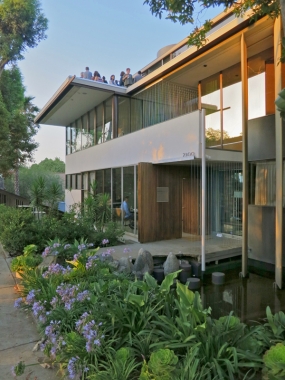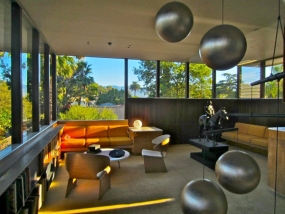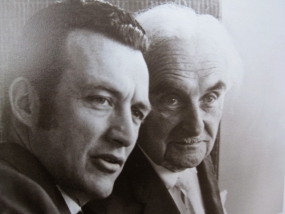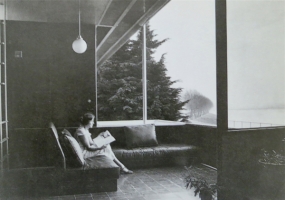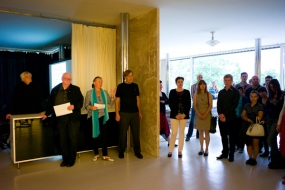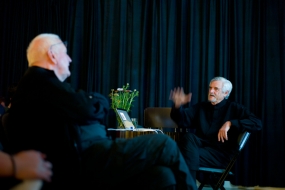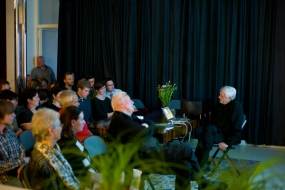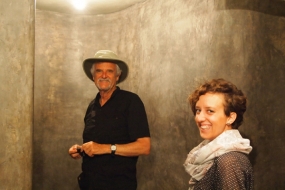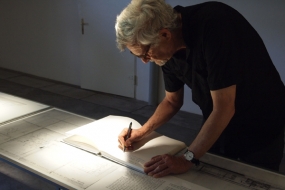The Significance and Survival of the Richard and Dion Neutra VDL Studio and Residences
Richard Neutra (1892–1970) was born and educated in Vienna, inspired by Otto Wagner, and a direct student of Adolf Loos. Like his older friend Rudolph Schindler he aspired to work with Frank Lloyd Wright but was detained by WW I. Only after working with Erich Mendelsohn and Gustav Amman he was able to go to the United States in the fall of 1923. He went with the idea that America provided the industrial possibility of adapting Wright's humane, nature-near commitments to mass produced dwellings, schools, hospitals and other "architecture of social concern." These structures were to be assembled from off the shelf elements available in America but not in Europe.
After working with Holabird & Roche and with Wright he moved to California where he published in 1926 “Wie Baut Amerika” describing its technology of building and showing the work of Wright, Schindler and Lloyd Wright as well as his own school and urbanistic studies. This book plus his and Schindler's joint project for the League of Nations and his 1927 reinforced concrete apartment building and his 1928/29 Lovell Health House and School brought international attention.
On a world tour ending with the third CIAM meeting in Brussels where he was the American delegate in 1930, he was invited by Kees van der Leeuw to meet the Dutch modernists, Rietveld, van Eesteren, Oud, and Douiker. He was invited by Ludwig Mies van der Rohe as a guest professor at the Bauhaus. In 1931 Van der Leeuw visited Los Angeles and lent Neutra money to enable him to build an experimental live work space in Los Angeles that could demonstrate what was possible in America.
The Neutra "VDL" (for van der Leeuw) compound was built in three stages: 1932, 1940 and 1966. This last phase made necessary by a fire that destroyed part of the compound. It was designed on the original prefabricated foundation in collaboration with Neutra's architect son Dion Neutra.
The compound was designed to accommodate three households and a small architectural office on a 60 x 70 foot lot. On the death of Neutra's wife and helper, Dione Neutra, in 1990 it was left to the College of Environmental Design at the California Polytechnical University at Pomona, a town just east of Los Angeles. It is the one place where one can see the steady evolution of Neutra's work in the one place where he was consciously demonstrating his ideas about using technology and nature to accommodate what people do, how they interact and what they experience. He demonstrated directly to clients and indirectly through extensive publications to the general and architectural communities.
Dr. Raymond Richard Neutra is the youngest son of the architect Richard Neutra. He was born in Los Angeles in 1939. Dr. Neutra received his Bachelors degree from Ponoma College, his medical degree from McGill University in Montreal and his Masters and Doctorate degrees from Harvard School of Public Health. Until 1980 he was a tenured Associate Professor at the UCLA Medical School and an Assistant Professor at the Harvard Medical School. From 1980 to 2007 he was Chief of the Division of Environmental and Occupational Disease Control at the California Department of Public Health. He carried out epidemiological research in Colombia and New Mexico. Dr. Neutra is board certified in preventive medicine, he is author of many publications and scientific articles.
He is also helping to fund raise for the Richard Neutra VDL Studio/Residences.
The lecture will include a short concert performance with short violin solos by Miloš Štědroň by a young Brno violinist, Tereza Marečková.
The lecture and the concert take place on Wednesday 2 July 2014 at 7 p.m. at the Villa Tugendhat
(a tour of the villa is not included in the lecture).
The lecture will be in English and will not be interpreted.
Entrance fee is 100,- CZK; students and seniors 50,- CZK.
An advance booking is required for the lecture, by telephone at +420 515 511 015/017
or e-mail: info@tugendhat.eu (limited capacity of 70 people).
The poster can be downloaded here.
Due to illness of violinist Tereza Marečková there was a little change in the musical prologue to the lecture.
Pianist Marcela Jelínková, a student of 6th year of the Brno Conservatory, performed April's Preludes, Op. 13 by Vítězslava Kaprálová.
